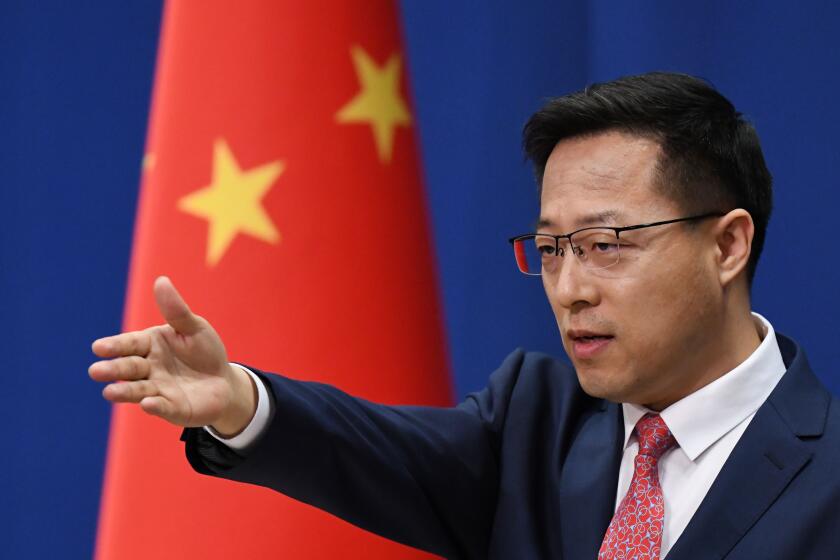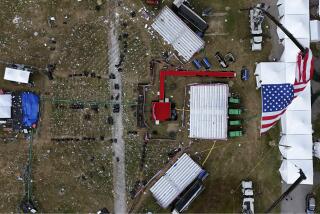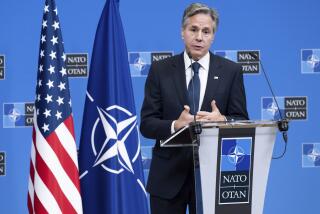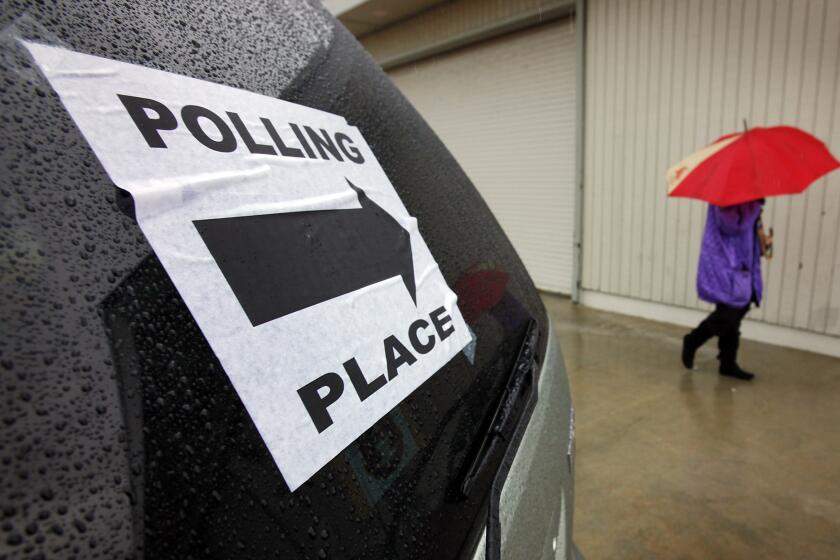China reins in nationalists clamoring for an invasion of Taiwan
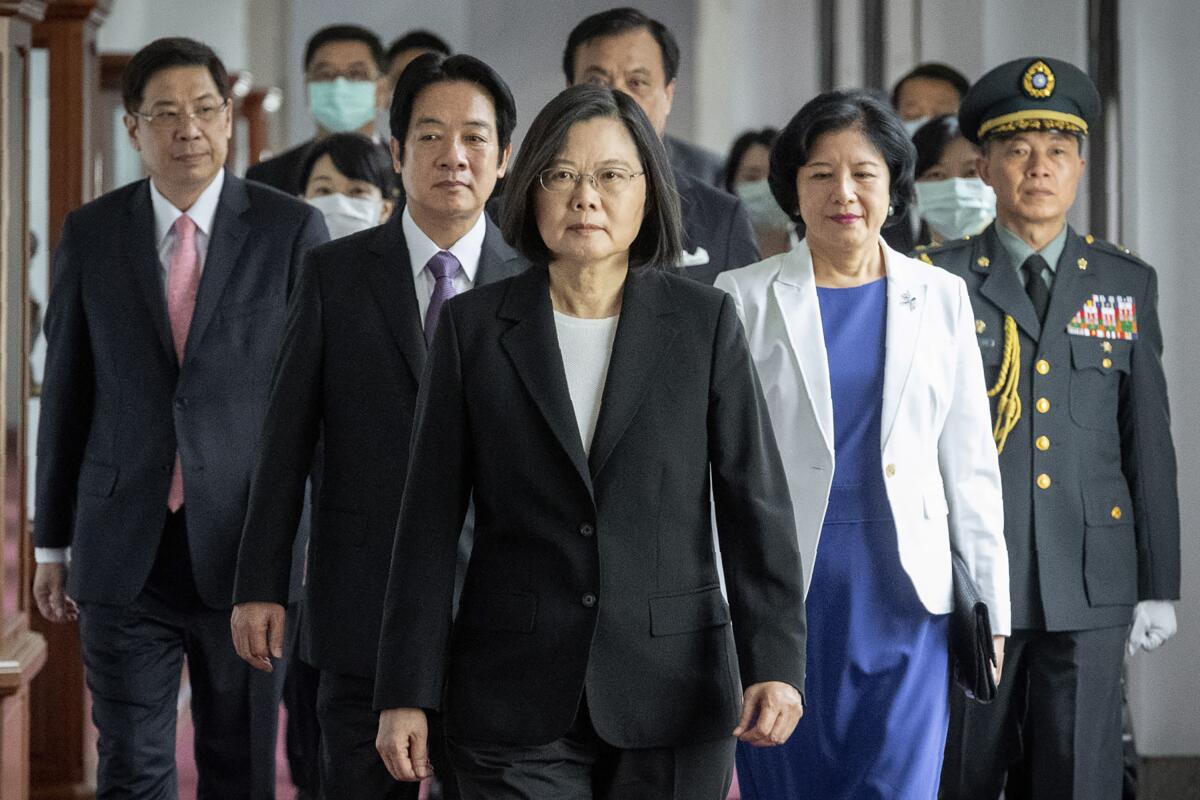
SHANGHAI — Armored personnel carriers roll down a city street. A train station sits half-destroyed. Residents cower behind curtains, a man throws up his arms in defeat. Soldiers press in, forcing vanquished Taiwanese President Tsai Ing-wen to carry a Chinese flag.
Such are the fantasies of China’s militant nationalists, portrayed in a series of art projects, anime cartoons and model dioramas that have been shared online, all depicting a Chinese invasion of Taiwan, which Beijing considers a breakaway territory.
“This is a great era of the Chinese people. No force can look down on us anymore,” wrote a social media user with a Chinese navy avatar who posted one of the images. “The motherland must be unified, and it inevitably will be unified.”
The hawkish views don’t represent the majority opinion in China, but they were amplified by the state this year after the reelection and inauguration of Tsai, a staunch opponent of unification with the mainland. They coincide with China’s growing military strength and its provocative actions to expand its influence in the South China Sea.
China’s communist rulers often stoke nationalism to burnish their legitimacy, especially when facing domestic challenges such as the mass unemployment and economic slowdown that have hit the country as a result of the COVID-19 pandemic. Assertiveness on the world stage is an effective distraction from problems at home.
In the last few months, social media posts have cheered China on as it has flown fighter jets into Taiwanese airspace, brawled with Indian soldiers along the remote Himalayan border and approved a national security law in Hong Kong that in effect eliminates the territory’s autonomy.
But the nationalistic chest-thumping can also backfire, not the least when it creates ambitious expectations of the nation’s modernizing military, which has risen to become one of the most powerful in the world (though the U.S. still outspends China on defense at a ratio of 4 to 1).
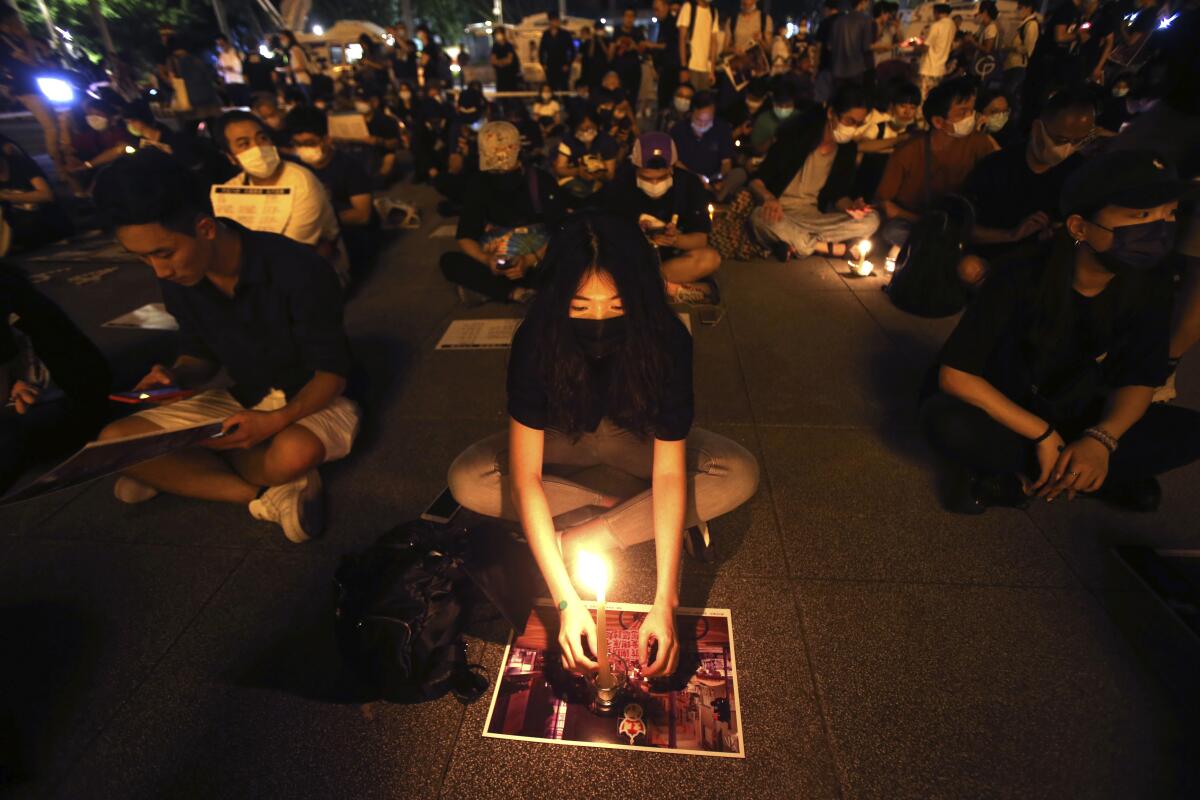
Contrary to the views of those online glorifying an invasion of Taiwan, the People’s Liberation Army would not be assured victory.
Taiwan’s mountainous terrain and narrow beaches make the island a daunting target for any invasion force — let alone one like the PLA, which hasn’t been tested in a war since it struggled against Vietnam in 1979.
The only thing assured about a war between China and Taiwan, experts say, is heavy casualties.
“A Taiwan conflict would be horrendous,” said Drew Thompson, a former U.S. Defense Department official and a visiting senior research fellow at the Lee Kuan Yew School of Public Policy at the National University of Singapore. “It would not be quick and easy, but a disaster.”
‘Put on a mask and shut up’: China’s new ‘Wolf Warriors’ spread hoaxes and attack a world of critics
The aggressive nationalism of China’s diplomats matches the swagger of Xi Jinping’s China, which is determined to deflect blame for the coronavirus.
Beijing needs to regularly encourage nationalism, having long abandoned communism as an ideology in the face of economic growth and a widening wealth gap. Whether nationalistic rhetoric will turn into state action, however, is uncertain.
As a top PLA general warned at a forum in Beijing last week that the Chinese military would “smash” any “separatist plots” in Taiwan, the nation’s main broadcaster, CCTV, ran a 10-part series about Mao Zedong’s 1958 shelling of the Taiwanese islands of Matsu and Kinmen.
Yet popular opinion in China doesn’t appear to favor war at a time of economic uncertainty. In a study released in March, researchers at the University of Hong Kong found people in China viewed reducing income disparity, expanding social welfare and investing in education as more important than military spending, which has nearly doubled since 2012 to $180 billion.
The heavy financial burden of war — not to mention the cost to China’s shaky international standing and its increasingly strained relations with Washington — would challenge the country’s ability to overcome its worst downturn in decades.
In apparent recognition of those many drawbacks, China has toned down calls by nationalists to strike Taiwan while the United States, which many presume would come to the island’s defense, is hobbled by the pandemic and social strife.
In the last month, retired military leaders have emerged with commentaries calling for calm and arguing conflict would derail China’s development as a world power.
An article published in a magazine for senior party leaders took inspiration from the 17th century Qing dynasty, which used strategic patience and economic coercion to capture the remaining remnants of the Ming dynasty who had fled to the island now known as Taiwan.
One of the most influential and surprising voices to counter the war mongering was that of former air force Gen. Qiao Liang, a noted hawk.
“The Taiwan problem cannot be solved with rashness and radicalism,” Liang wrote on Weibo, a social media platform.
Liang is coauthor of the book, “Unrestricted Warfare: China’s Master Plan to Destroy America,” which Stephen K. Bannon, President Trump’s former chief advisor, credits for inspiring his hawkish views on China.
The former general’s addition to the list of voices tempering nationalism highlights the many levers the Chinese government employs to manipulate public opinion — and how important it is to prevent war cries from getting carried away, experts say.
“The party has substantial leeway to shape public opinion and shut down expressions of nationalism when they go too far for comfort, whether online or in the streets,” said Jessica Chen Weiss, a China specialist and associate professor of government at Cornell University.
“In China, the tail does not usually wag the dog when it comes to significant policy decisions, such as the national security law in Hong Kong or whether to use force across the Taiwan Strait. But popular nationalism often provides the spark for international confrontation.”
That was the case last year when a tweet by basketball executive Daryl Morey in support of pro-democracy demonstrators in Hong Kong sparked a ferocious public backlash in China. The government ordered a blackout of games that threatened a $5-billion business relationship with the National Basketball Assn.
But when nationalistic protesters tried to protest at an NBA game in Shenzhen, they were repressed by police, their Chinese flags confiscated — by turning online rhetoric into organized action, they had gone too far.
In another example, Kazakhstan’s Foreign Ministry summoned the Chinese ambassador in April to protest an article popular among nationalists suggesting the Central Asian country belonged to China. The Chinese Foreign Ministry had to affirm the article did not represent Beijing’s position.
As China’s outbreak eases, migrants are bearing the brunt of the lockdown’s economic cost.
Few things, however, inspire zealous national pride more than China’s modernizing military.
The PLA’s buildup has included aircraft carriers, nuclear-powered submarines and a more offensive-oriented air force, including upgraded longer-range fighter planes and strategic bombers equipped with cruise missiles, security analysts said.
The country’s focus on communications warfare, autonomous systems and hypersonic missiles could thwart a lumbering giant like the U.S. Navy.
War gamers at the Rand Corp. warned last year that the U.S. had “its ass handed to it” in battle simulations.
“The Chinese military has progressed very quickly — much more quickly than most had anticipated,” said Ian Storey, senior fellow at the ISEAS-Yusof Ishak Institute in Singapore. “It is closing the gap, and it might be a decade or two away, but it is certainly on the road to catching up with the U.S.”
Still, questions persists about how effective the PLA would be in combat, and not just because it lacks experience.
Experts say the army, navy and other branches don’t communicate well with one another. And PLA officers are said to be overseen by political officers in the Chinese Communist Party who must approve operational decisions, limiting the army’s power.
“It could also mean that tactical and strategic decisions are made for political rather than military reasons,” Storey said. “I’m sure the Communist Party would regard political control of the PLA to be of paramount importance.”
Taiwan, on the other hand, has adopted a so-called asymmetric strategy designed to inflict the maximum amount of pain on the PLA with its much smaller military. That centers on deploying defenses such as sea mines and anti-ship cruise missiles.
If China’s growing military might is meant to intimidate Taiwan into unification someday, its online nationalists have succeeded in doing the opposite, according to social media banter in the democratic enclave.
While the invasion images have gone viral in Taiwan, they’ve also been subjected to ridicule, including being widely described euphemistically as a Chinese form of “self-comfort.”
Su reported from Shanghai and Pierson and Bengali from Singapore.
More to Read
Sign up for Essential California
The most important California stories and recommendations in your inbox every morning.
You may occasionally receive promotional content from the Los Angeles Times.
